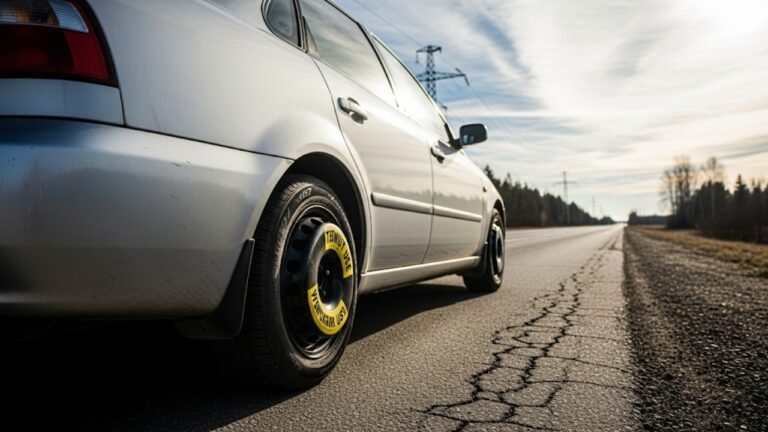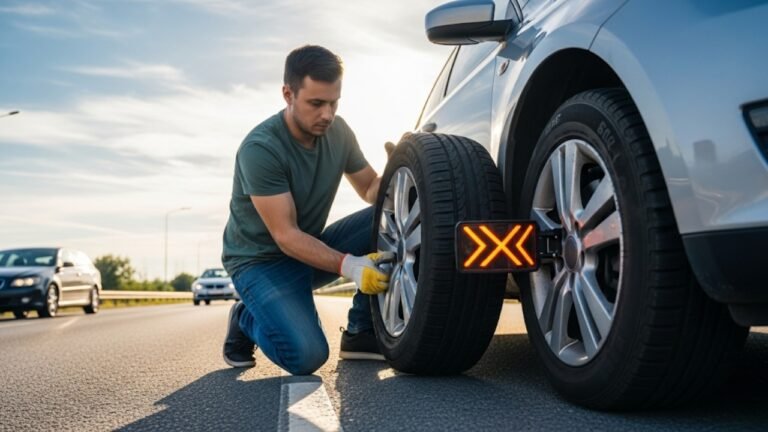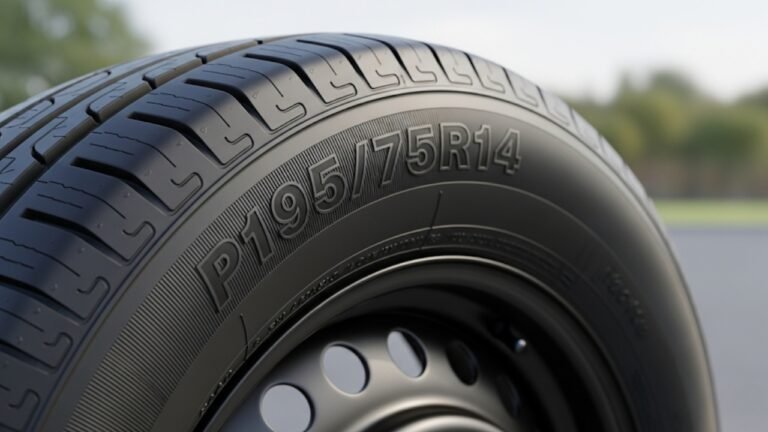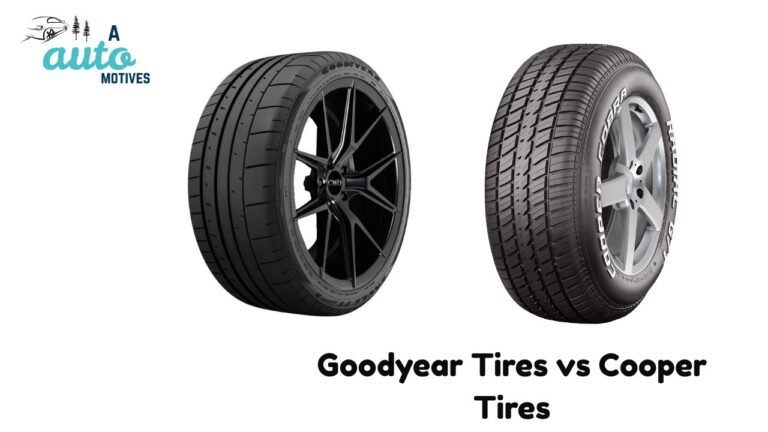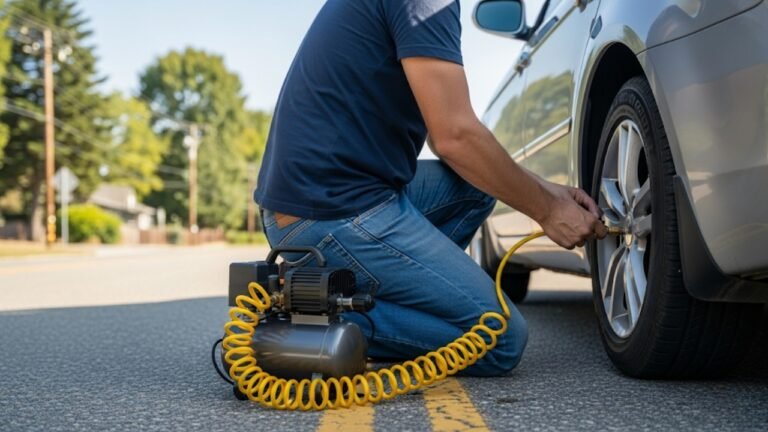How to Fix a Puncture Car Tyre Like a Pro: Step-by-Step Guide
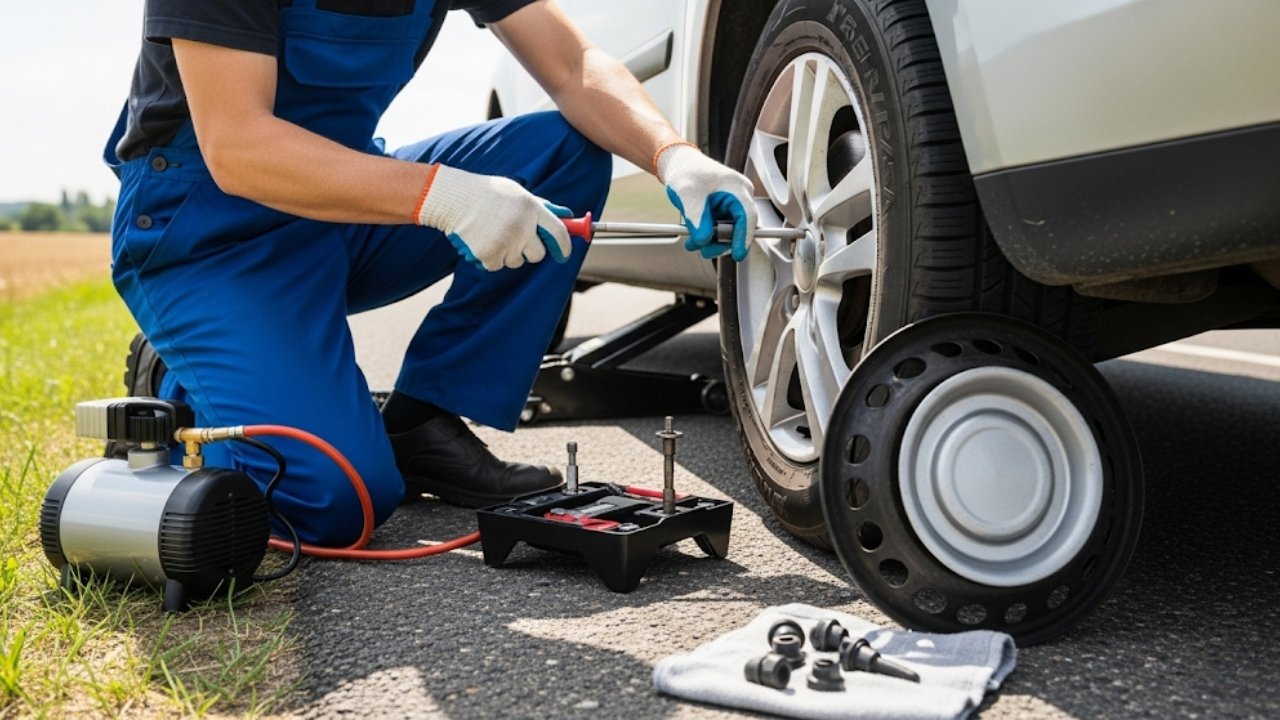
It always happens when you least expect it. You’re cruising down the road, music playing, maybe late for work or just heading out with friends—and then thump, thump, thump. That dreaded sound. Your car is pulling to one side. Your gut tells you it’s a flat tyre.
We’ve all been there. It can feel frustrating, even scary, especially if you’re on a lonely road or it’s pouring rain. But what if I told you that learning how to fix a puncture car tyre isn’t as complicated as it seems?
In this guide, I’m going to break it all down in simple steps. You’ll feel like we’re in the garage together, sleeves rolled up, figuring it out. Whether you’re completely new to it or just need a refresher, you’re about to gain a skill that every driver should have in their back pocket.
Why Tyres Go Flat: Understanding the Enemy
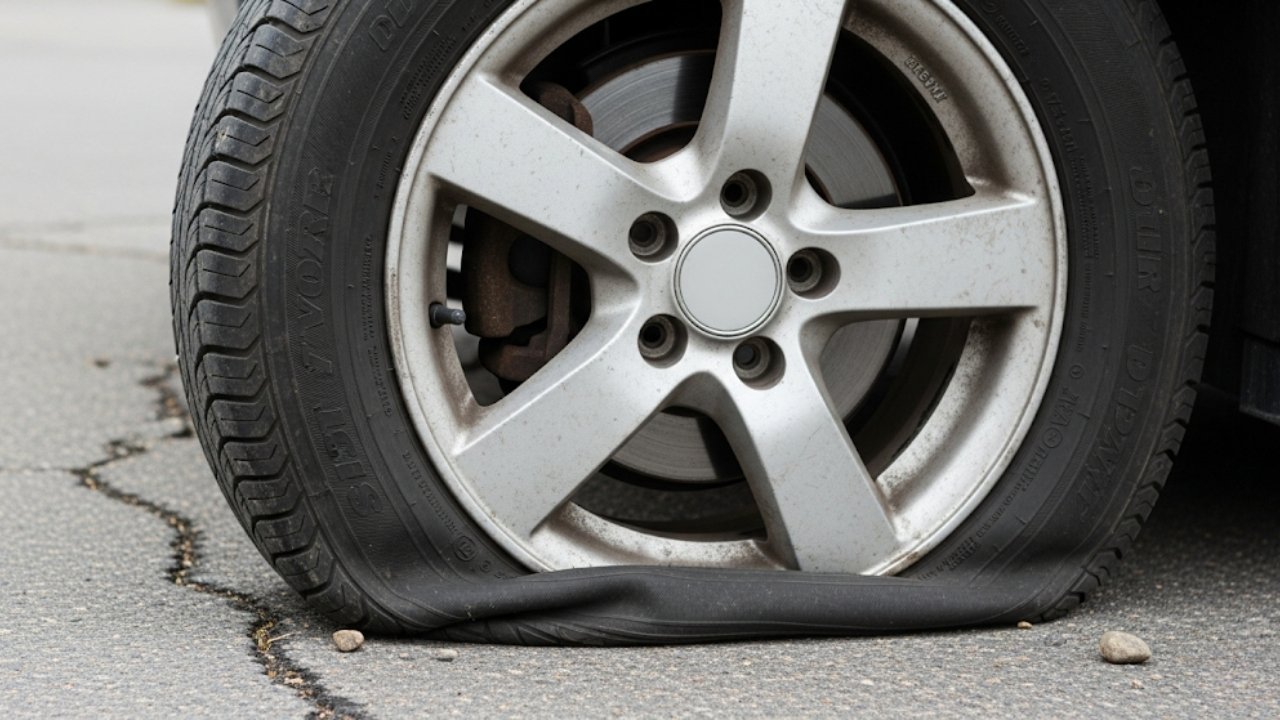
Most of the time, a car tyre puncture is caused by:
-
Sharp objects like nails, screws, or glass
-
Hitting a curb or pothole too hard
-
Valve stem failure
-
Tyre bead leaks
-
Slow leaks over time from tyre wear or ageing rubber
In my case, I once found a rusty screw embedded in my rear tyre after a trip to a construction site. It had been slowly leaking air over two days—until it gave up altogether at a traffic light.
Understanding these causes will help you spot danger early. For example, driving over debris on the road or ignoring a low tyre pressure warning light can increase your risk of a blowout.
Safety First: What to Do Immediately After a Puncture
When your tyre goes flat, the way you respond matters. Don’t panic. Here’s what to do if you suspect a puncture car tyre while driving:
-
Grip the wheel firmly and avoid jerky movements.
-
Slow down gradually by taking your foot off the accelerator.
-
Signal and steer to safety, ideally a flat spot away from traffic.
-
Turn on your hazard lights.
-
Apply the parking brake and turn off the engine.
-
If it’s dark or on a highway, use reflective triangles or safety vests if you have them.
I remember once changing a tyre on a rainy night. I was soaked, cold, and trying to light the area with my phone. Since then, I always carry a flashlight and gloves in my emergency kit. Trust me—those little things can save you a lot of stress.
Tools You’ll Need: The Ultimate Puncture Repair Kit
To fix a puncture car tyre, you don’t need a mechanic’s toolbox. Here’s what you should have in your boot:
Basic Tools Checklist
-
Spare tyre (or donut tyre)
-
Car jack and lug wrench
-
Tyre plug kit (for tubeless tyres)
-
Tyre sealant (optional, temporary solution)
-
Tyre inflator or air compressor
-
Pressure gauge
-
Flashlight
-
Gloves
-
Reflective triangle or flares
Table: Tools Comparison
| Tool | Purpose | Optional or Essential |
|---|---|---|
| Car jack | Lifts the car to remove the tyre | Essential |
| Lug wrench | Loosens wheel nuts | Essential |
| Tyre plug kit | Seals the puncture hole | Essential (tubeless) |
| Sealant | Temporary fix for small punctures | Optional |
| Air compressor | Re-inflates tyre | Essential |
You can get a ready-made puncture repair kit from most auto stores. If you don’t have one, it’s worth investing in. It’s like a fire extinguisher—better to have it and not need it than the other way around.
Step-by-Step: How to Fix a Puncture Car Tyre (Tubeless)
Now the good stuff. If your tyre is tubeless (which most modern cars use), you can fix a minor puncture without removing the tyre completely.
Let me walk you through the steps I’ve used myself:
Step 1: Locate the Puncture
Roll the car forward slightly to inspect the tyre. You might hear a faint hiss or spot a nail/screw lodged in the rubber. Mark the spot with chalk or a pen.
Step 2: Remove the Object
Use pliers to gently pull out the nail or debris. Be careful—it might be hot from friction.
Step 3: Prepare the Hole
Use the reaming tool (from your plug kit) to clean and widen the hole. This helps the plug stick better.
Step 4: Insert the Plug
Thread a rubber plug through the insertion tool. Push it into the hole until only a small piece is visible. Pull out the tool quickly—it’ll leave the plug in place.
Step 5: Inflate and Check
Use your air compressor to inflate the tyre to the correct PSI (check your car manual). Then, pour a bit of soapy water on the plug to check for leaks. If you see bubbles, it’s still leaking.
This repair can last for weeks or even months if done well. But it’s always best to get a permanent fix or tyre replacement soon.
How to Replace a Flat Tyre with a Spare
Sometimes, the puncture is too big, or your tyre is shredded beyond repair. That’s when your spare tyre steps in.
Here’s how to swap it safely:
-
Loosen the wheel nuts slightly before jacking up the car.
-
Use the jack to raise the car until the tyre is off the ground.
-
Remove the nuts and take off the damaged tyre.
-
Mount the spare, then screw the nuts back on.
-
Lower the car, and tighten the nuts in a criss-cross pattern.
-
Drive carefully and get the main tyre fixed ASAP.
A donut tyre is only for short distances (usually under 50 miles and below 50 mph). It’s like running on a sprained ankle—it’ll do for now, but it’s not ideal.
Temporary vs Permanent Fixes: What’s the Difference?
There’s a big difference between a quick fix and a permanent repair. Knowing this can save you from a roadside disaster later.
Temporary Fixes:
-
Tyre sealants or sprays
-
Tyre plugs (if done in a hurry)
-
Driving on a spare tyre
These are lifesavers in the moment but shouldn’t be relied on long-term. I once plugged a tyre and forgot about it—until it blew out again on the freeway two weeks later. Lesson learned.
Permanent Fixes:
-
Internal patching by a tyre shop
-
Tyre replacement
-
Professional plug-patch combo repair
If the puncture is near the sidewall, or the damage is too deep, it’s best to replace the tyre altogether. Your safety isn’t worth gambling on.
How to Prevent Tyre Punctures in the First Place
As the saying goes, prevention is better than cure—and that applies perfectly to puncture car tyre issues. While you can’t avoid every nail on the road, you can lower your chances of a flat.
Here’s how to reduce the risk:
-
Check your tyre pressure regularly. Underinflated tyres overheat and are more prone to damage.
-
Avoid potholes, debris, and sharp objects when driving.
-
Rotate your tyres every 5,000–8,000 miles. This prevents uneven wear.
-
Don’t overload your vehicle. Extra weight puts stress on tyres.
-
Inspect the tread depth. Bald tyres are much more vulnerable.
-
Replace tyres before they age out. Even if they look okay, rubber hardens and cracks over time.
One winter, I ignored a slowly leaking tyre for weeks. I kept topping it up, thinking it wasn’t serious. Then it gave out during a storm, and I had to change it on the shoulder of a busy motorway. Never ignore a slow leak—it’s your tyre begging for help.
Tyre Pressure: The Hidden Hero of Tyre Health
Tyre pressure might seem like a boring number on your dashboard, but it’s the unsung hero when it comes to preventing punctures. Driving with low or high pressure is like walking in shoes that don’t fit—it ruins the experience and damages the tyres.
Here’s why it matters:
-
Low pressure makes the tyre flex more, leading to heat buildup and possible sidewall damage.
-
High pressure makes the tyre too rigid, increasing the risk of a blowout when hitting potholes.
✅ Check your pressure:
-
Once a month
-
Before long road trips
-
After major temperature changes
Most cars have a sticker on the driver’s door or fuel cap with the recommended PSI. Use a reliable tyre pressure gauge or a digital inflator to keep it spot-on.
Maintaining the right pressure also improves fuel economy and handling. So, it’s not just about fixing a puncture—it’s about keeping your whole ride smoother and safer.
How Much Does It Cost to Fix a Puncture Car Tyre?
Let’s talk money. People often ask: “Is it cheaper to fix or replace?”
Here’s a breakdown:
| Service Type | Average Cost (USD/GBP) | Notes |
|---|---|---|
| DIY plug repair | $5–$15 / £4–£12 | Plug kit included |
| Professional repair | $20–$40 / £15–£30 | Includes inspection & balancing |
| Sealant fix (temporary) | $10–$20 / £8–£16 | Quick, but not permanent |
| New tyre replacement | $80–$250+ / £70–£200+ | Depends on brand & car type |
If the puncture is in the central tread area and under 6mm wide, you can often repair it safely. But damage on the sidewall, rim, or a large tear usually means buying a new tyre.
Pro tip? Don’t skimp. I once opted for a cheap secondhand tyre to save cash—it ended up costing me more when it wore out in just a few months. Always invest in your safety.
When to Call the Pros: Knowing Your Limits
Yes, you can fix a puncture car tyre yourself, but sometimes, it’s better to let the professionals handle it.
Here are situations where DIY won’t cut it:
-
The puncture is on the sidewall or shoulder.
-
There’s a gash larger than 6mm.
-
The tyre is visibly warped, cracked, or damaged.
-
You’ve used sealant, and it’s gummed up the inside.
-
You’re unsure about the quality of your repair.
There’s no shame in calling for roadside assistance. In fact, it’s wise. I once tried patching a tyre in 100°F heat on the side of the highway—it was risky, and I nearly passed out. In moments like those, professional help is peace of mind.
Real Stories, Real Lessons
Let me share a few short anecdotes that’ll stay with you.
Maria’s Morning Commute:
Maria, a friend of mine, had a tyre blowout during rush hour. She’d been ignoring the low-pressure light for days. The result? A shredded tyre, a missed interview, and $200 out of pocket. Now, she checks her tyres every Sunday.
Sam’s Night in the Rain:
Sam used a tyre sealant after a puncture on a rainy night. It worked for a while… until the sealant clogged his tyre pressure sensor. That little shortcut ended up costing him a lot at the garage. Moral? Temporary fixes are just that—temporary.
My Mountain Mishap:
On a road trip through the hills, I ran over a jagged rock. With no mobile signal, no help, and just my repair kit, I managed to plug the tyre and keep going. That day, I truly appreciated knowing how to fix a puncture car tyre.
FAQs: Everything You Need to Know
1. Can I drive with a puncture car tyre?
It’s not safe. A flat tyre can damage your rim or cause loss of control. Pull over and either fix it or replace it.
2. Is tyre sealant a good solution?
Only for short-term fixes. Sealant can block sensors and damage the tyre from the inside if left too long.
3. How long does a tyre plug last?
A well-done plug can last months, but it’s best to get a professional patch or replacement as soon as possible.
4. Can I fix a run-flat tyre?
Some run-flats can be repaired, but many manufacturers recommend replacing them. Always check your specific brand.
5. Should I repair or replace a tyre after a puncture?
If the hole is in the central tread and small, repair it. If it’s on the sidewall or too large, replace it.
6. What’s the difference between a tubeless and tube tyre?
Tubeless tyres don’t have an inner tube. They’re easier to plug and seal, making them ideal for roadside repair.
7. Can I use a tyre repair kit on all types of cars?
Most standard passenger vehicles are compatible with plug kits. But always double-check your car’s tyre type first.
8. Why does my tyre keep losing air after I fixed it?
It could be an improperly sealed plug, a hidden second puncture, or a leaking valve stem.
Final Thoughts: Turning a Problem Into a Skill
Let’s be honest—getting a flat tyre sucks. It throws off your plans, tests your patience, and gets your hands dirty. But every driver will face it sooner or later. Learning how to fix a puncture car tyre turns an annoying setback into a moment of independence.
It’s not just about tyres. It’s about self-reliance. Confidence. The feeling of “I’ve got this.”
Whether you’re a new driver or a seasoned one, knowing how to spot, fix, and prevent tyre problems makes every journey safer. So, grab that repair kit, check your spare, and the next time you hear that dreaded hiss… you’ll smile, roll up your sleeves, and get to work.
You’ve got this.

